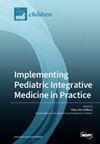摘要
背景/目的:在《国际疾病分类》(ICD-11)和《诊断与统计手册》第五版人格障碍替代模式(DSM-5 AMPD)对人格障碍(PD)的新概念化中,人格功能受损方面的身份发展在诊断指南和确定人格障碍严重程度方面发挥着核心作用。一方面是暂时的身份危机,同时保持完整的身份意识;另一方面是病态的身份扩散,这与当前或新出现的人格障碍的高风险相关。后者不仅是边缘型人格障碍的特征,也是所有人格障碍的特征,应尽早发现,以预防慢性疾病和关键的生命历程。母亲的精神病理学与儿童精神病理学的多个领域(如饮食紊乱、抑郁)有关。在本研究中,我们探讨了母亲心理病理学在预测儿童身份发展受损方面的潜力:共询问了 101 位母亲在孩子出生两周后、6 周大、4 个月、14 个月和 5.5 岁时的健康状况。具体而言,她们使用 SCL-90-R 对生理和心理症状进行了评估。此外,还使用 AIDA(青春期身份发展评估)问卷对其子女在青少年时期的身份发展情况进行了评估。我们使用线性回归模型来研究母亲的症状负担对子女身份扩散的解释程度:结果:在所有时间点上,母亲的精神病理学都对身份扩散有明显的预测作用,其效应大小较小,而在 14 个月后,解释模型显示出中等效应大小:本研究数据表明,母亲的精神病理症状对其子女身份发展的功能具有相关影响,而这一点尚未在纵向研究中得到实证证明。这一发现凸显了在纵向研究中纳入更多因素(尤其是儿童方面的因素)以及更深入地调查这种与临床高度相关的关系的重要性。Background/objectives: In the new conceptualization of personality disorders (PD) in ICD-11 and Diagnostic and Statistical Manual 5 Alternative Model of Personality Disorders (DSM-5 AMPD), identity development in terms of impaired personality functioning plays a central role in diagnostic guidelines and determining PD severity. On the one hand, there is a temporary identity crisis while keeping an integrated sense of identity and, on the other hand, there is pathological identity diffusion, which is associated with a high risk of a current or emerging PD. The latter is characteristic not only of borderline PD but of all personality disorders and should be detected as early as possible to prevent chronic illness and critical life courses. Maternal psychopathology is linked to several areas of child psychopathology (e.g., eating disorders, depression). In the current study, its potential to predict a child's impaired identity development is investigated.
Methods: A total of 101 mothers were asked about their health status 2 weeks after the birth of their child and when their child was 6 weeks, 4 months, 14 months and 5.5 years of age. Specifically, physical and psychological symptoms were assessed with SCL-90-R. In addition, their children were assessed in young adulthood regarding their identity development with the AIDA (Assessment of Identity Development in Adolescence) questionnaire. Linear regression models were used to investigate the amount of explanation of children's identity diffusion by maternal symptom burden.
Results: Maternal psychopathology significantly predicted identity diffusion at all time points with small effect sizes, while after 14 months, the explanation model showed a medium effect size.
Conclusions: The present data suggest a relevant influence of maternal psychopathological symptoms on their children's identity development in terms of functioning that has not yet been empirically shown in a longitudinal study. This finding highlights the importance of including further factors (particularly on the part of the child) in longitudinal studies and of investigating this clinically highly relevant relationship in greater depth.

 求助内容:
求助内容: 应助结果提醒方式:
应助结果提醒方式:


